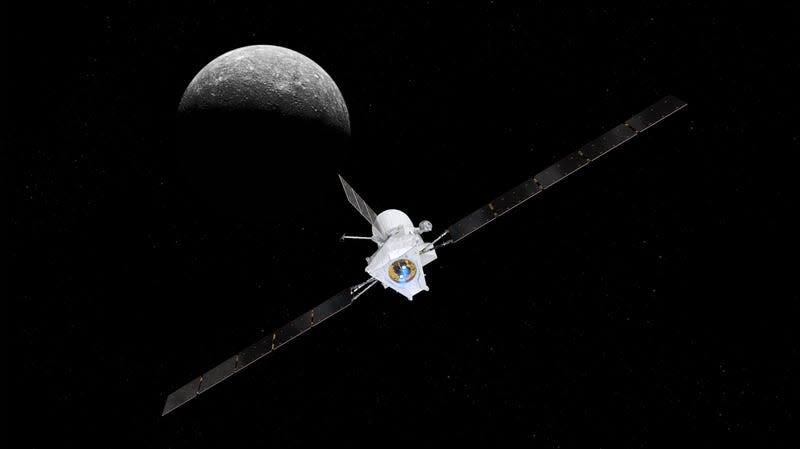Twin Probes Suffer Thruster Glitch on the Way to Mercury

For more than five years, a pair of spacecraft have been traveling through the solar system to reach the innermost planet Mercury and observe its extreme conditions. During its complex journey, the BepiColombo mission ran into a problem that’s preventing its thrusters from operating at full power, potentially jeopardizing the mission.
BepiColombo launched in October 2018 as a joint mission between the European Space Agency (ESA) and the Japan Aerospace Exploration Agency (JAXA), each providing an orbiter to explore Mercury’s surface and interior, and the planet’s magnetic field. The two probes, consisting of ESA’s Mercury Planet Orbiter (MPO) and JAXA’s Mercury Magnetosphere Orbiter (MMO), launched together on a single spacecraft, and each will enter its respective orbit around Mercury in December 2025. The recent issue with BepiColombo’s propulsion system could risk its ability to complete its upcoming gravity assist.
BepiColombo’s Transfer Module, built by ESA and is used to generate thrust, failed to deliver enough electrical power to the spacecraft’s thrusters before a scheduled maneuver on April 26, ESA announced. In response, the mission team was able to restore the spacecraft’s thrust to approximately 90 percent of its previous level by May 7, but the Transfer Module’s available power is still lower than it should be. As a result, BepiColombo’s full thrust still can’t be restored.
The team is currently trying to maintain the current power levels of the spacecraft’s propulsion system while trying to estimate how this will affect upcoming maneuvers. BepiColombo is scheduled for its fourth gravity assist at Mercury in September before its final orbital insertion. During a gravity assist, the spacecraft uses Mercury’s gravity to slow down as it positions itself to enter the planet’s orbit.
If the spacecraft maintains its current power levels, then it may be able to reach Mercury in time for its planned gravity assist, according to ESA. The Flight Control Team in Germany has also arranged for the spacecraft to carry out additional ground station passes to closely monitor BepiColombo’s twin probes and react to any issue that may suddenly come up. Team members are also trying to figure out the root cause of the issue.
BepiColombo is only the third spacecraft to visit Mercury; the Sun’s gravity is what makes the planet so hard to reach. The mission carried out its first flyby of the planet in October 2021 and has been returning gorgeousclose-up images of the solar system’s smallest planet. We’re rooting for this pair to make it to Mercury, gathering data about the solar system’s underdog planet.
For more spaceflight in your life, follow us on X and bookmark Gizmodo’s dedicated Spaceflight page.

